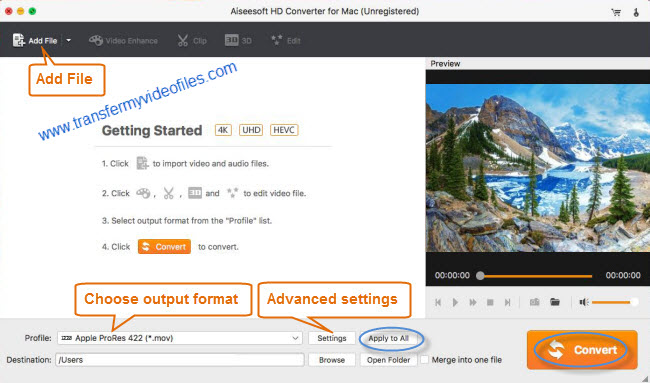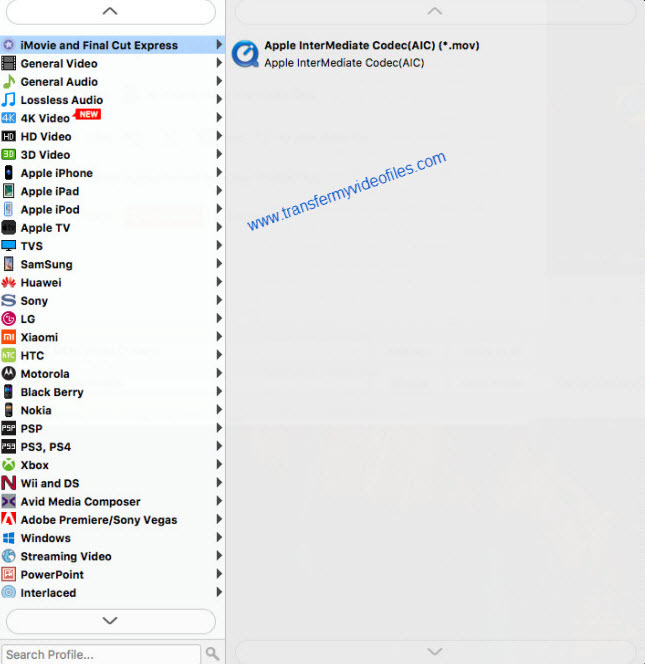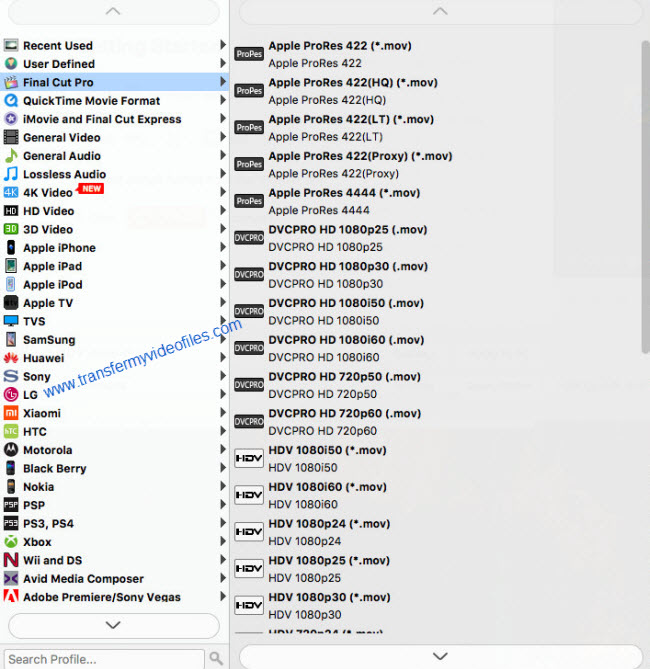Facing issues importing and editing Canon EOS M3 video on Mac? If so, you may wish to read this post. It explains an easy way to convert EOS M3 MP4 video to QuickTime MOV for editing on Mac through iMovie, FCE and FCP X.

Shooting stunningly creative movies via Canon EOS M3 is as easily as stills with manual control over shutter speed, aperture and ISO. You can capture stunning 1080p movies at 24, 25 and 30 fps in MP4 format with fast, smooth autofocus thanks to the advanced Hybrid CMOS AF III. You can easily transfer images and movies to smartphones, tablets or the Canon Connect Station using Wi-Fi and NFC, for quick uploading to social networks or watching on a wide screen TV. But what’s the smoothest workflow for editing EOS M3 MP4 video on Mac iMovie, FCE and FCPX? For a fast and fluid workflow, we would recommend transcoding EOS M3 MP4 to AIC for iMovie/FCE and encoding EOS M3 MP4 to ProRes for FCPX. This requires third party converter app like HD Video Converter for Mac.
As the name implies, the HD Video Converter for Mac is a reliable and powerful converter tool developed for the purpose of converting/transcoding High Definition and HD-camera/camcorder videos to whatever format you need, so that the produced files can be used in NLEs for further editing (e.g. FCP, iMovie, FCE, Avid Media Composer, Sony Vegas, Adobe Premiere Pro CS6,and DaVinci Resolve), or be viewed on popular devices like iPad mini 2, iPad Air, Samsung Galaxy Tab 4, Microsoft Surface Pro 3, Galaxy Note4, Galaxy S5, Kindle Fire HDX, Google Nexus, WD TV, PS4, Xbox 360, and more for personal entertainment.

How to convert EOS M3 MP4 video for editing on Mac iMovie, FCE and FCP X?
Follow these steps:
Step 1: Open up HD Video Converter for Mac as a Canon EOS M3 Video Converter for Mac. When its main interface comes up, click ‘Add File’ to load your source media.

Step 2: Select output format for your editing program
To convert Canon EOS M3 mp4 video for iMovie/FCE, from ‘Profile’ list, choose ‘Apple InterMediate Codec (AIC) (*.mov)’ as output format under ‘iMovie and Final Cut Express’ column.

To transcode Canon EOS M3 MP4 files for FCP X, select ‘Apple ProRes 422 (*.mov)’ as output format under ‘Final Cut Pro’ column. The ProRes codec is also workable in its former version FCP 6 and FCP 7.

Important: If you’ve loaded a number of video clips to do batch conversion, please do remember ticking off ‘Apply to All’ option before you start.
Step 3: Custom video and audio settings (optional)
If necessary, you can click ‘Settings’ button and go to ‘Profiles Settings’ panel to modify video and audio settings like video encoder, resolution, video bit rate, frame rate, aspect ratio, audio encoder, sample rate, audio bit rate, and audio channels. 3D settings are also available.
Step 4: Begin Canon EOS M3 MP4 to MOV Conversion on Mac
When ready, click ‘Convert’ to start format conversion. Once the conversion process is complete, you can click ‘Open Folder’ button to get the generated AIC MOV files or ProRes MOV files for editing in iMovie, Final Cut Express or FCP X with optimum performance.
Tips:
If you don’t want to wait for the entire conversion process, you can tick off ‘Showdown computer when conversion completed’ and go away to do other things.
Related posts
Will Canon T6s/T6i (760D/750D) MP4 work well with iMovie?
Edit Nikon D5300 MOV files in iMovie and Final Cut Express
How can I edit Canon EOS 100D/Rebel SL1 MOV in FCP X?
Is it possible to edit Canon G1 X Mark II MP4 in iMovie/FCE?
Transfer Canon R400 AVCHD to Mac FCE and iMovie for editing
